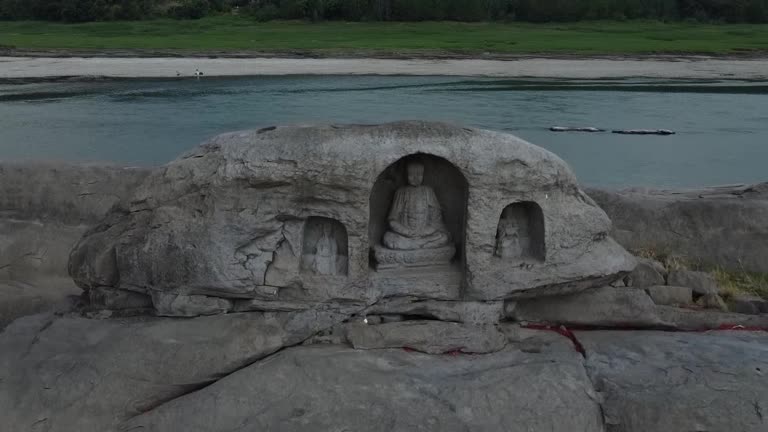When outdoor enthusiast Gu Yunfeng heard about the appearance of a once submerged island in the Yangtze River, hosting a trio of Buddhist statues, he decided to swim out to see the 600-year-old icons.
Plunging water levels in the Yangtze River in China’s southwestern city of Chongqing, have revealed the statues believed to be 600 years old, state media Xinhua has reported.
The three statues were found on the highest part of the island reef called Foyeliang, initially identified as built during the Ming and Qing dynasties. One of the statues depicts a monk sitting on a lotus pedestal.
The Yangtze’s water levels have been falling rapidly due to a drought and a heatwave in China’s southwestern region.
Unprepared, Gu came to the river bank to visit the statues, but only then found out he had to swim.
“I don’t think we will see it again when the water level comes back so I’m here to see it. This is a culture that our ancestors have left us,” said Gu.
After around 20 minutes, Gu successfully made it to the shore of the island. He lost his shoes in the strong current, so had to use his shirt to wrap around his feet to walk on the hot stones as the temperature had risen to as high as 45 degrees Celsius (113 degrees Fahrenheit).
He was exhausted when he swam back to his waiting wife. Gu said that the the decreased water levels made him feel worried, adding “I feel like the environment has just become quite bad. I think this is a warning to us.”
As many as 66 rivers across 34 counties in Chongqing have dried up, state broadcaster CCTV said on Friday (August 19).
In Europe weeks of baking drought across the continent have also revealed long-submerged treasures.
In Spain, archaeologists have been delighted by the emergence of a prehistoric stone circle dubbed the “Spanish Stonehenge”. Another of Europe’s mighty rivers, the Danube, has fallen to one of its lowest levels in almost a century, exposing the hulks of more than 20 German warships sunk during World War Two near Serbia’s river port town of Prahovo.
(Reuters)






